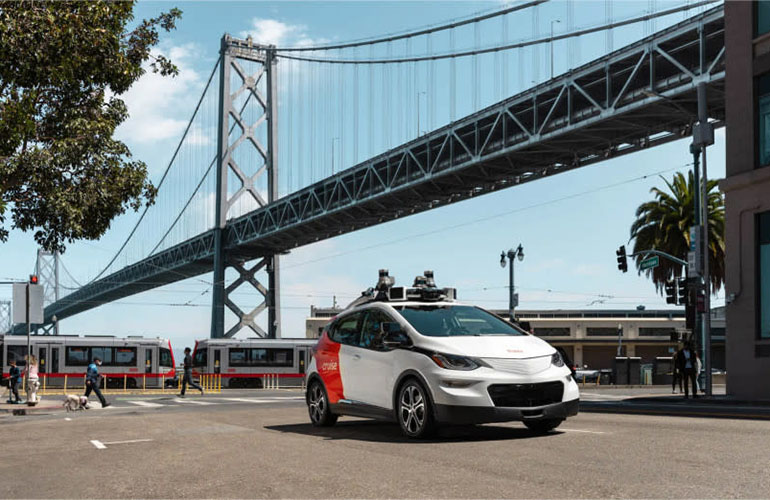|
Listen to this article  |

Cruise recently began giving daytime robotaxi rides in San Francisco. | Source: Cruise
Cruise is now offering daytime robotaxi rides to its employees. The self-driving unit of GM hopes to open up the service to the public soon.
Cruise has been testing its robotaxi service in San Francisco since June 2021, when it became the first company authorized to test robotaxis in the state. In June 2022, it was finally able to begin charging for robotaxi rides in the city. Up until now, however, the company’s operations have been limited to between 10 PM and 6 AM.
Cruise co-founder and CEO Kyle Vogt announced the daytime expansion on Twitter. He also shared a map of the daytime operating area, which appears significantly smaller than Cruise’s nighttime operating area. Vogt said the service areas will eventually become the same.
San Francisco is the first city Cruise began testing its robotaxi services in. According to the company, this is because of how difficult it is to drive in the city. Cruise engineers hope that by starting with one of the most complex driving environments, they can quickly roll out the robotaxi service to more cities with easier driving conditions.
In September, Cruise announced it is rolling out its service to two more cities, Phoenix and Austin, within 90 days and before the end of this year. While it took the company 33 months to receive all the regulatory approval it needed to begin rides in San Francisco, according to Vogt, for the company’s next deployment locations it took just three weeks. Cruise plans to start operations small in both of the new cities, with hopes to scale more in 2023.
Cruise faces competition in San Francisco and Phoenix. Waymo, the self-driving vehicle technology unit of Google parent Alphabet, has also been operating in both cities. In San Francisco, Waymo has been working to roll out its service since it began limited tests in February 2021, and it most recently received a Drivered Deployment permit from the California Public Utilities Commission (CPUC) in March.
In Phoenix, where Waymo started its robotaxi services, the company recently opened up its robotaxi service to the public in downtown Phoenix without any autonomous specialists behind the wheel. Waymo robotaxis can even transport customers from downtown Phoenix to the airport. The autonomous, paid ride-hailing service is available around the clock to anyone who downloads Waymo’s app.
Besides rolling out its robotaxi services across the country, Cruise is also working to develop its own chips for AVs. The company aims for the chips to be deployed by 2025, with the hopes that it can bring down the cost of developing its robotaxis and scale up the volume by developing in-house instead of continuing to work with its current chip provider NVIDIA.
Credit: Source link


Comments are closed.